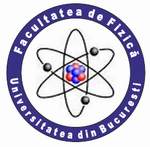| |
 |
UNIVERSITY OF BUCHAREST
FACULTY OF PHYSICS Guest
2025-10-05 22:33 |
 |
|
|
|
Conference: Bucharest University Faculty of Physics 2025 Meeting
Section: Atomic and Molecular Physics. Astrophysics. Applications. Optics, Spectroscopy, Plasma and Lasers
Title:
Detection of Rare Actinide Isotopes by Accelerator Mass Spectrometry for Nuclear Astrophysics Studies
Authors:
Elena Moroianu(1, 2, a), Iuliana Stanciu(1), Doru Pacesila(1), Andreea Dima(1), Oana Gâza(1),Maria Farias(3), Albert Cabré Cano(4), Shawn Bishop (5), Livius Trache(1), Radu Vasilache (2).
Affiliation:
(1) Horia Hulubei National Institute for R&D in Physics and Nuclear Engineering, Reactorului Str. 30, 077125, Magurele (Ilfov), ROMANIA
(2) Faculty of Physics, University of Bucharest, 030018 Bucharest, Romania
(3) Laboratorio de Investigaciones Microbiologicas de Lagunas Andinas (LIMLA), Planta Piloto de Procesos Industriales Microbiologicos (PROIMI), CCT, CONICET, San Miguel de Tucuman, Tucuman, ARGENTINA
(4) Department of Earth and Environmental Sciences, Ludwig–Maximilians–Universität München, Munich, 80333 GERMANY
(5) Physik Department E68, Technische Universität München, James-Franck-Str. 1, D-85748, Garching, GERMANY
E-mail
(a) elena.moroianu@nipne.ro
Keywords:
AMS, Actinides, Radiochemistry
Abstract:
Accelerator Mass Spectrometry (AMS) is a powerful ultra-sensitive technique, often described as “looking for a needle in a haystack,” due to its capacity to detect and count individual atoms of transuranic elements. Previous studies have highlighted its capabilities by detecting 244Pu in a 2-million-year-old stromatolite from the Turkana Basin—one of the oldest known geological structures preserving biosignatures on Earth. While such work demonstrated the potential of AMS to trace stellar nucleosynthesis through rapid neutron capture (r-process) signatures, current research efforts are now directed toward identifying anthropogenic isotopic signatures, such as 239Pu, 240Pu, 241Pu, and 241Am, associated with global nuclear fallout.
The present study focuses on modern stromatolites and sediment cores collected from the remote Andean mountains in Argentina—formations that developed during the era of atmospheric nuclear weapons testing (1945–1992). The primary objectives are to determine the mass concentration (bioaccumulation) factors of transuranic isotopes, assess the growth rates of these structures, and quantify the radionuclide inventory in layers corresponding to known nuclear events. For comparative purposes, Holocene stromatolites (ca. 5500 cal. yr BP) from the Turkana Basin, Kenya, are also analyzed to contrast natural versus anthropogenic inputs.
All measurements are performed using the 1 MV Tandem Accelerator at IFIN-HH, ensuring precise detection of these isotopic signatures at trace levels. By investigating the accumulation of transuranic elements in stromatolites—natural biogeochemical archives—this research advances the understanding of both anthropogenic and extraterrestrial contributions to Earth’s surface environment. The results offer critical insights into radionuclide bioaccumulation processes, long-term environmental impacts of nuclear fallout, and the integration of cosmic material into geological records. These findings support improved models of geochemical cycling and contribute to global efforts in nuclear safety and environmental monitoring.
References:
• E. Moroianu et al., "Quantification of plutonium and americium in environmental matrices by accelerator mass spectrometry", MDPI Atoms Accepted for publication (2025)
• Bishop, Shawn, et al. "Discovery of Extraterrestrial 244Pu in 2 Million Year Old Fossilized Stromatolites." The Planetary Science Journal 6.3 (2025): 75.
• J.J. Harrison et al., "Separation and measurement of thorium, plutonium, americium, uranium and strontium in environmental matrices," Journal of Environmental Radioactivity, 102 (2011), 896-900.
• D. Păceșilă et al., "Ultrasensitive detection of 244Pu in environmental samples by accelerator mass spectrometry," Journal of Analytical Atomic Spectrometry, 37 (2022), 2581–2588.
• I. Stanciu et al., "Status report on AMS measurements of plutonium isotopes using the 1MV Tandetron Accelerator at IFIN-HH," Nuclear Instruments and Methods in Physics Research, Section B, 529 (2022), 1–6.
• D. Păceșilă et al., "Quantification of 239Pu radioactivity in swipe samples by Accelerator Mass Spectrometry," Nuclear Instruments and Methods in Physics Research, Section B, 539 (2023), 43–46.
Acknowledgement:
Acknowledgments. Romanian Government Programme through the National Programme for Installations of National Interest (IOSIN), Collaborative Research Center SFB1258 of the Deutsche Forschungsgemeinschaft (SFB1258)
|
|
|
|

